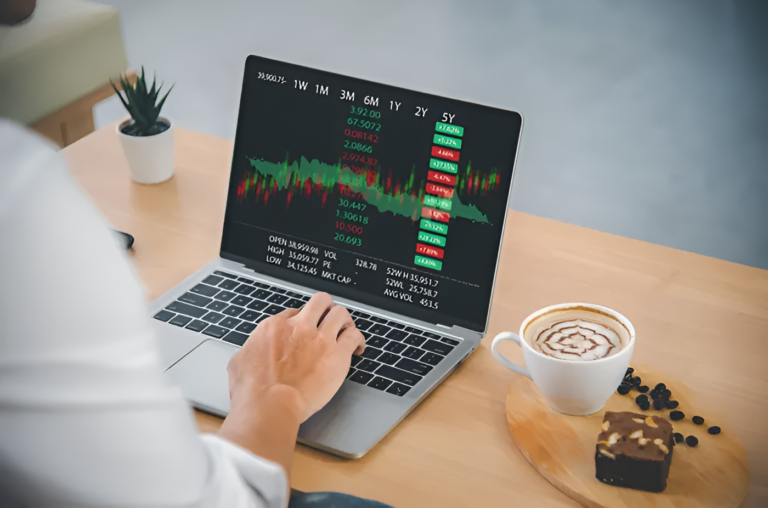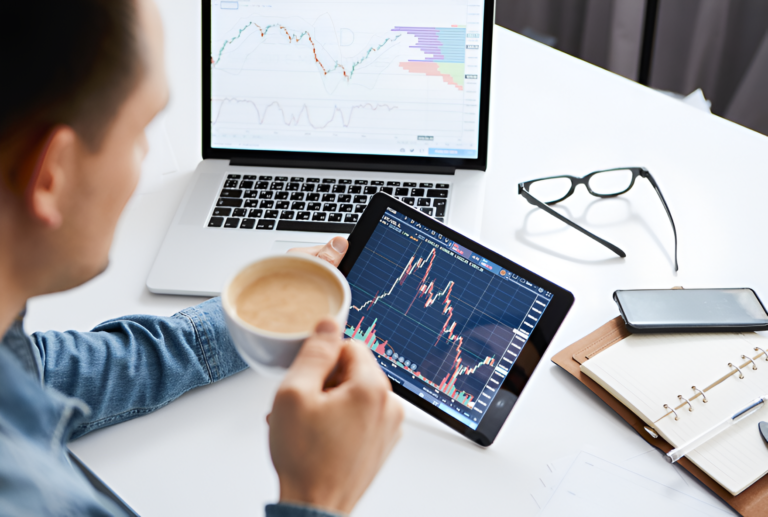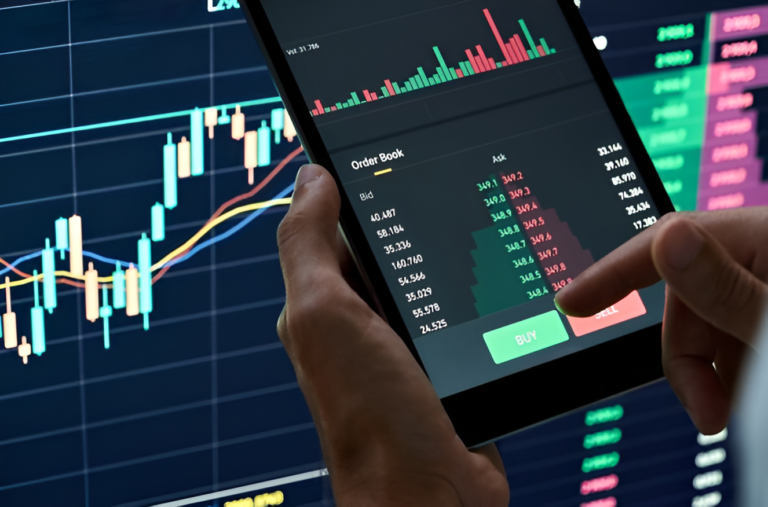Introduction to Trading: The Role of a Trader in Financial Markets
Trading refers to the act of buying and selling financial assets, such as stocks, bonds, currencies, or commodities, with the goal of making a profit. It involves the exchange of financial instruments in markets like the stock market or foreign exchange market, where traders utilize different strategies and tools to capitalize on price movements. A trader actively participates in these markets, seeking opportunities to achieve financial gains through informed decision-making and analysis.
Early Morning Routine: Preparing for the Trading Day
Starting the Day
Traders typically wake up around 5 AM or earlier to prepare for the markets. Morning rituals like light exercise, meditation, and a healthy breakfast help boost focus and energy for the demanding day ahead.

Checking Global Markets
The first task is scanning global news and market updates. Traders review major international markets (Asia, Europe) and assess how overnight developments might impact their trading strategies. Economic reports and geopolitical events are key areas of focus.
Planning the Day
Preparation involves setting clear goals, reviewing positions from the previous day, and identifying adjustments if needed. Traders also create a watchlist of assets to monitor based on market trends and overnight activity.
Pre-Market Preparation: Laying the Groundwork for Trading Success
Market Analysis
Traders start by conducting a thorough analysis of the market. This often involves a mix of technical analysis—studying chart patterns, indicators, and price movements—and fundamental analysis, which focuses on news events, earnings reports, and economic data. Together, these methods help traders identify potential opportunities and trends.

Risk Management
Effective risk management is a critical part of pre-market preparation. Traders set stop-loss orders to limit potential losses and determine profit targets for their trades. They also calculate position sizes and allocate their portfolios to balance risk and reward effectively.
Tracking Earnings Reports and Announcements
Traders keep an eye on the earnings calendar, focusing on companies releasing reports that could impact market movements. They also prepare for scheduled economic events, such as FOMC meetings or GDP data releases, which often cause significant market volatility.
The Market Open: Navigating the First Crucial Minutes
Adrenaline Surge
The market open is a high-energy moment, marked by excitement and unpredictability. Traders closely watch early volatility and emerging trends as prices react to overnight developments and pre-market trading.

Monitoring Trades
With the market in full swing, traders execute buy and sell orders, often in quick succession. They remain vigilant for breaking news or unexpected events that could affect their positions, requiring split-second decisions.
Adjusting Strategy
As the market unfolds, traders fine-tune their positions in response to real-time data. This might involve scaling into or out of trades, tightening stop-losses, or seizing unexpected opportunities. Staying calm and focused is key to managing emotions during sharp market movements.
The Closing Bell: Wrapping Up the Trading Day

Final Trades of the Day
As the market approaches its close, traders focus on finalizing their positions. Depending on their strategy, they might close trades to secure profits, minimize losses, or decide to hold positions overnight if conditions warrant it.
Post-Market Review
After the closing bell, traders review the day’s trades, analyzing what worked and what didn’t. This reflection helps identify successful strategies and provides valuable lessons for future sessions.
Post-Trading Routine: Reflecting and Preparing for Tomorrow
Record Keeping
Traders document their trades, profits, and losses in a trading journal. This practice helps track performance, identify patterns, and evaluate the effectiveness of strategies over time.
Research for the Next Day
The post-trading routine includes reviewing market news and analyzing key data to prepare for the next session. Traders refine their strategies and plan adjustments based on insights gained from post-market analysis.
Mental and Physical Well-Being: Maintaining Balance in a Demanding Career
Dealing with Stress
Trading comes with emotional highs and lows, requiring mental resilience to stay focused under pressure. Traders use techniques like meditation, mindfulness, or regular exercise to manage stress and maintain clarity during challenging market conditions.
The Importance of Balance
To prevent burnout, setting clear boundaries between work and personal life is crucial. Traders benefit from stepping away from screens, spending quality time with family, or pursuing hobbies to recharge and maintain a healthy balance.
Conclusion: A Day in the Life of a Trader
From early morning preparations to the closing bell and post-market review, a trader’s day is a blend of analysis, decision-making, and adaptation. It demands discipline, focus, and unwavering dedication to navigate the fast-paced and often unpredictable financial markets.
While trading comes with its challenges—intense stress, sharp market swings, and the need for constant vigilance—it also offers significant rewards. The opportunity to grow financially, the thrill of executing a successful trade, and the satisfaction of mastering a demanding skill make it a unique and fulfilling pursuit.
FAQs
Q. How much capital do I need to start trading?
- The amount of capital needed depends on the type of trading you want to do and your risk tolerance. For beginners, starting with a smaller amount and focusing on risk management is recommended. Many brokers offer accounts with low minimum deposit requirements.
Q. How do traders manage risk?
- Risk management is achieved through techniques such as setting stop-loss orders, diversifying positions, adjusting trade sizes, and continuously reviewing market conditions. Successful traders always have a clear risk strategy in place.
Q. What is the best time of day to trade?
- The best time to trade depends on the market and strategy. For stock traders, the first hour after market open (9:30 AM to 10:30 AM EST) often sees high volatility and opportunities. Forex traders may focus on periods of overlap between major market sessions.
Q. Can trading be a full-time career?
- Yes, many successful traders make a full-time career out of trading. However, it requires significant experience, risk management skills, and emotional resilience to manage the demands of full-time trading.


I respect how you simply complex concepts into digestible chunks. It’s truly remarkable.